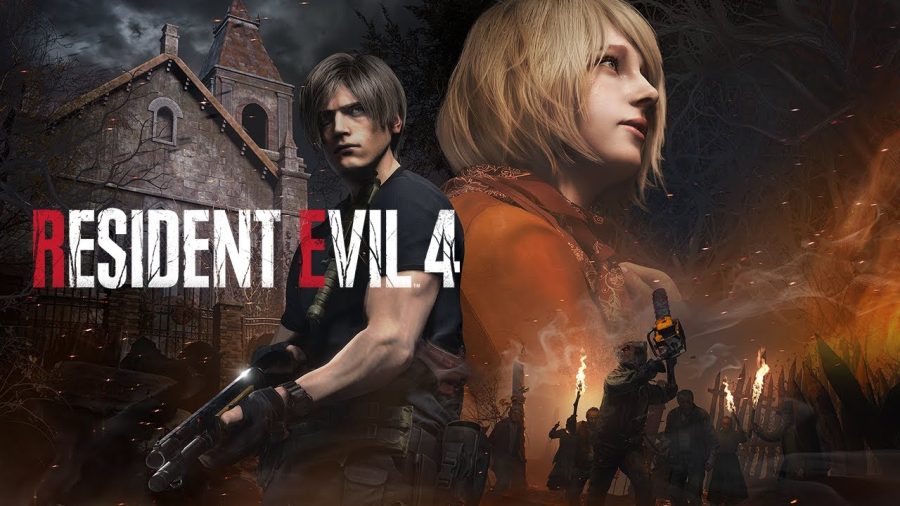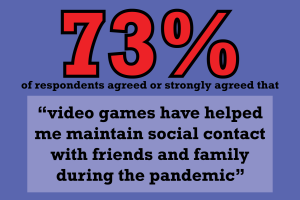The Resident Evil 4 Remake Successfully Revives the Game in Modern Times
The biggest contender in the Japanese zombie video game-sphere has returned with their action-packed remake after 18 years
May 26, 2023
Warning: This article contains spoilers for the Resident Evil game series.
The Resident Evil franchise began in 1996, and is a Japanese horror game series developed by Capcom. Its fourth installment, “Resident Evil 4”, was released for the Nintendo GameCube in 2005 and, eighteen years later on March 24, Capcom released the remake of the same name for the PlayStations 4 and 5, Xbox Series X/S and Windows.
The Resident Evil franchise is no stranger to remakes; they released their first remake in 2002 — also for the GameCube — based on the first game, “Resident Evil.” There was a significant pause in the release of remakes for nearly 20 years until 2019 when “Resident Evil 2” was released for PlayStation 4, Xbox One and Windows.
As with most of the Resident Evil remakes, there are notable changes in the gameplay, character design and atmosphere, making the outdated original game much more modernized.
The 1998 game “Resident Evil 2” began with Leon S. Kennedy arriving in Racoon City for the first time amid a plague of zombies pursuing him. Despite being only a rookie police officer, his first day on the job consisted of averting and murdering any zombie in his path and attempting to understand the origin of this apocalypse. In the original installment, “Resident Evil,” the player learned that the biomedical company, Umbrella Corporation, was undertaking a series of illegal experiments — which created the T-virus — leading many of their personnel to become zombies, spreading this virus around the city.
Six years later, Leon was promoted to a special agent. Though he still maintains his sarcastic demeanor mixed with cheeky one-liners, he is now more hardcore than ever. He serves as a secret agent for the U.S. government in the search to rescue Ashley Graham, the president’s daughter, who was kidnapped by a cult in the Spanish countryside.
As with most of the Resident Evil remakes, there are notable changes in the gameplay, character design and atmosphere, making the outdated original game much more modernized. The story remains the same, but, nonetheless, there are changes that really stand out and make a difference.
The ambiance in a game can make or break the fear factor, and this change in the atmosphere provides the player with a much scarier and dark experience.
The most prominent change featured across the series is the character design. In the original rendition, Kennedy’s character reflected the trends of the time. For example, his hair, which is mushroom-styled and split right in the middle, is reminiscent of early 2000s male heartthrobs. In the “Resident Evil 4” remake, his hair is much more detailed and fuller than before. Similarly, his face appears much more realistic with meticulous features and expressions; it almost looks as if it was a real person in a movie. Kennedy is back and hotter than ever.
Ashley Graham, however, received a total makeover. In the 2005 game, the college student looked a lot younger than expected, with a side part similar to a half-bang and an outfit that combined preppy with adventurous. Now, her character design is much cleaner and more cohesive, with a proper side-bang, a more mature face and a still-preppy, yet chic, outfit. The redesign turned Graham from a meek teenager to a formidable and tough young woman, which meshes well with her personality and character development.
The change in the game’s atmosphere remains one of the key detail alterations between the original and the remake. The setting is still in rural Spain, but now it is much eerier because of the change of the color palette and lighting. The 2005 “Resident Evil 4” was much brighter, and most of the color in the environment had a warm, yellow and orange tint. In the 2023 remake, the colors are darker and feature a cooler, blue-and-black tint.
The ambiance in a game can make or break the fear factor, and this change in the atmosphere provides the player with a much scarier and dark experience, where they can truly immerse themselves in the fear-inducing environment.
The gameplay time has also been elongated from the original 16 hours to 20 hours. Although some fans wondered how a survival horror game could be that long, as they are typically between 10 and 12 hours long. In my opinion, this is actually an advantage, as the game can develop at a slower pace and have more time to focus on the world-building aspect.
In terms of gameplay, there are new additions that can give the player a much-needed break from the horror elements. The remake now includes side quests. Though completely optional, it is still an entertaining choice that brings a great reward to the player.
Another notable removal made by the developers is the game’s quick time events (QTE), which were present in the original “Resident Evil 4.” In the 2005 version, the game would make the player quickly press prompted buttons to avoid sudden death. These QTEs were unavoidable, as they were mostly cutscene-specific. These have been eliminated from the remake, reducing the player’s stress level in the gameplay.
The new “Resident Evil 4” remake is a prime example of an old game that has successfully pulled-off its modernization attempt. The advanced and revamped features give the game an elevated environment and an entirely new experience from previous versions.
Although “Resident Evil 9” is currently expected to be in the works at Capcom, many believe that another remake within the series will not arrive until 2024. The 2023 “Resident Evil 4” remake will have to keep fans satisfied until then, which it will most likely have no issue doing given its revolutionary changes and innovations to the original gaming experience.














